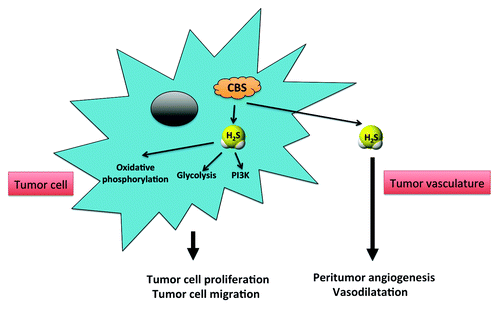Figures & data
Figure 1. Stimulation of colorectal cancer cell growth, proliferation, migration, and peritumor angiogenesis and blood flow by the CBS/H2S axis. CBS utilizes l-cysteine and L-homocysteine to produce H2S in colorectal cancer cells. H2S acts as a mitochondrial electron donor, thereby stimulating oxidative phosphorylation. In addition H2S stimulates glycolysis via activation of GAPDH, most likely via its post-translational modification (sulfhydration). These responses facilitate ATP production, which is essential for growth, proliferation, and cell movement. Moreover, CBS-derived H2S may act an endogenous activator of the PI3K pathway, a classical pro-growth signaling pathway. Tumor-derived H2S may also diffuse out of the tumor tissue, thereby reaching peritumoral and intratumoral vascular tissue, where it increases the supply of the tumor cell with blood and nutritients via stimulation of neovessel formation (tumor angiogenesis) as well as by acting as a local vasodilator hormone.
